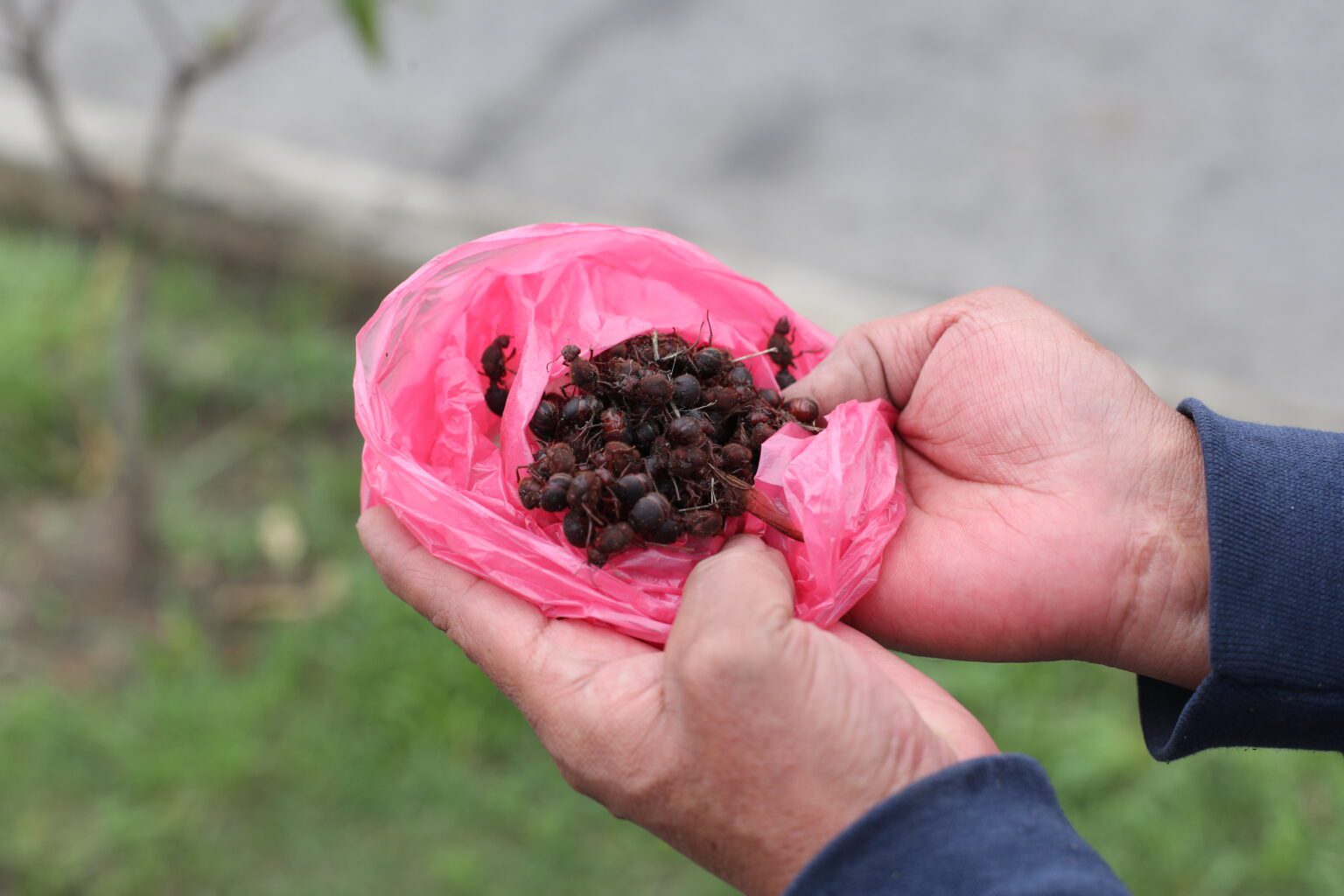Global Courant 2023-05-19 02:54:35
When the rainy season begins, it is common to start seeing the famous May zompopos, especially in the wooded areas of the country. These insects, which are relatively large ants, are usually eaten roasted, with lemon and salt.
The May zompopos are a species of ant called Atta cephalotes that is one of the most common in Guatemala. They usually appear when the rainy season begins, since this climate represents for them the beginning of a new mating season.
According to the biologist Laura Sáenz, the queen ants and the males are called “zompopos de Mayo”. Females can be differentiated because their wings are larger. “Actually, the one we eat is the queen, because it is the only dandruff within the ants that have wings,” she adds.
The Atta cephalotes are also characterized because they are ants that cut leaves and use them to grow a fungus for their food. Their colonies are made up of the queen, who is the only one with reproductive capacities and is approximately two centimeters long; the soldiers, who measure one and a half centimeters and their function is copulation with the queens; and the workers, which are divided into cleaners, guardians and leaf collectors.
May zompopos: where they live and where they come from
The ant species that May zompopos are part of form very large subterranean colonies, up to 200 square meters or more. “It is recognized by its paths that go from the nest to food sources, with the workers carrying leaves”, indicates the Arboretum, of the Francisco Marroquín University.
The worker ants are the ones we usually see on the ground, which walk in a row and some carry leaves for their food. These leaves rot in the colony and form a fungus called Rozites gongylophora which is then eaten.
The worker ants are the ones that we most easily see carrying things towards their home. (Free Press Photo: Gabriel Uribe on Pixabay).
The rainy season heralds the mating season, so it is the only time the queen ant leaves the nest. Their courtship and mating flights occur in the early morning after the first heavy rains, when the ground is moist, according to the Arboretum. After the nuptial flight, the queen loses her wings and excavates a cavity where she places her eggs and a piece of fungus that she carried into her mouth from the original colony.
“Their strategy is that they produce a large number of queens and males at this time because it is a low percentage that manages to establish a new colony. For this reason, when the rainy season begins, it is common for us to see the queen ants, which we know as zompopos”, explains Sáenz.
Because the rainy season used to start in May, it was that they were baptized as “zompopos de Mayo”. However, due to climate change, industrialization processes and urban growth, this is what has caused the arrival of these insects to be as specific as before. That is, now they appear approximately in June.
The species of zompopos ‘Atta cephalotes’ is the most common throughout the national territory. (Free Press Photo: PL Newspaper Library)
The tradition of eating the zompopos de mayo
Despite the fact that in Guatemala it is not as popular to eat insects as in other countries, zompopos are considered part of the country’s gastronomy. They are mentioned in the Popol Vuh as a “Guatemalan caviar” and Fray Francisco Ximénez, in his book Natural History of the Kingdom of Guatemala, published 300 years ago, also refers to the consumption of these insects.
Read more | The “zompopizzas”, culinary specialty of mayo zompopos that is tasted in San Martín Jilotepeque
Experts in agronomy and gastronomy indicate that, in the departments of Guatemala, it is customary to roast them on the comales where the tortillas are cooked and then lemon and salt are added. They are also eaten with butter and salt.
Some people use to remove the legs, wings and head. Then they place them on the griddle and add pepitoria and cobanero peppers.
Do May zompopos have vitamins?
During the rainy season it is common for them to be found for sale in markets in San Juan Sacatepéquez, Huehuetenango, Chimaltenango, Baja Verapaz and in the city; since its consumption provides different nutrients to the human being.
According to nutritionist Carolina Solares, because zompopos are insects and arthropods, they are considered as protein, specifically keratin. Each is estimated to be 60 percent protein and 10 percent carbohydrate. However, so far there is no data available about which vitamins would be obtained by consuming these animals.








